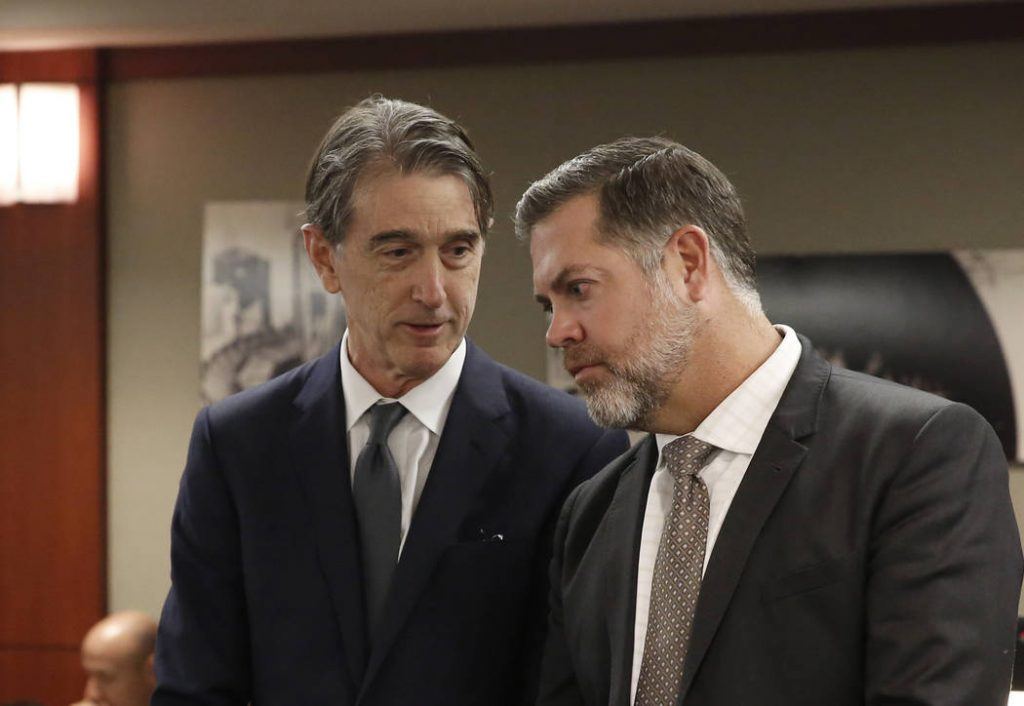Judge Orders MGM to Preserve Evidence at Route 91 Shooting Site, Mandalay Bay
Posted on: October 31, 2017, 01:14h.
Last updated on: October 31, 2017, 01:20h.
Facing two lawsuits and the possibility of future litigation, MGM Resorts was ordered Monday by a Las Vegas judge not to destroy any evidence related to the Oct. 1 Route 91 Harvest festival shooting.

Attorneys that filed suit will bring forensic experts to inspect the grounds where 58 people were killed and nearly 500 were wounded in an effort to aid in their legal discovery process for claims against the casino giant.
The inspection is scheduled for Tuesday, Oct. 31. Attorney Brian Nettles, who represents Rachel Sheppard, a California woman who was shot three times and is seeking damages from the Mandalay Bay and its parent company, spoke to reporters after a Monday hearing.
“What we want to do is to preserve all of the evidence to get answers, figure out what happened,” he said. “And the only way we can figure out what happened and to get answers is to get in there ourselves with experts to determine what the setup was, why this occurred, what broke down, what policies and procedures were in place, and what policies and procedures may have been violated.”
Preserving Crime Scene
The festival grounds have remained the same from that deadly night when Stephen Paddock opened fire from a 32nd floor suite of the Mandalay Bay, raining down more than 1,000 bullets on a crowd enjoying the Route 91 country music concert.
Lawyers sought to investigate not only the area of the tragedy but also the hotel suite that shooter Stephen Paddock turned into his deadly sniper’s nest.
District Judge Mark Denton signed the order granting the lawyers’ request.
The ruling comes about a week ahead of MGM CEO Jim Murren’s third-quarter financial call. Even though economic impacts to the company won’t be seen until the fourth quarter of 2017, analysts and investors expect to hear Murren in some capacity address the impact of the tragedy on the company moving forward.
Examining Killer’s Brain
Unrelated to the lawsuit but still of interest to lawyers is the mental state of Stephen Paddock, who carried out the tragedy. An autopsy did not find any abnormalities in the 64-year-old’s brain, but it is being sent to Stanford University in an effort to answer why he committed the massacre.
Doctors will conduct a month-long examination using multiple forensic analysis methods to look for any indicators of health problems such as strokes, blood diseases, tumors, some types of epilepsy, multiple sclerosis, degenerative disorders, physical trauma, and infections.
Dr. Hannes Vogel, Stanford University Medical Center’s director of neuropathology, told the New York Times that the procedures might provide answers.
“The magnitude of this tragedy has so many people wondering how it could have evolved,” he said. “All these speculations out there will be put to rest, I think.”
But Dr. Gabriel Leger, behavioral neurologist with the Cleveland Clinic Lou Ruvo Center for Brain Health in Las Vegas, told the Las Vegas Review-Journal that conclusively determining why this occurred is a bit optimistic.
“I don’t think ‘why’ could ever come out of a brain autopsy itself,” he said.
No comments yet